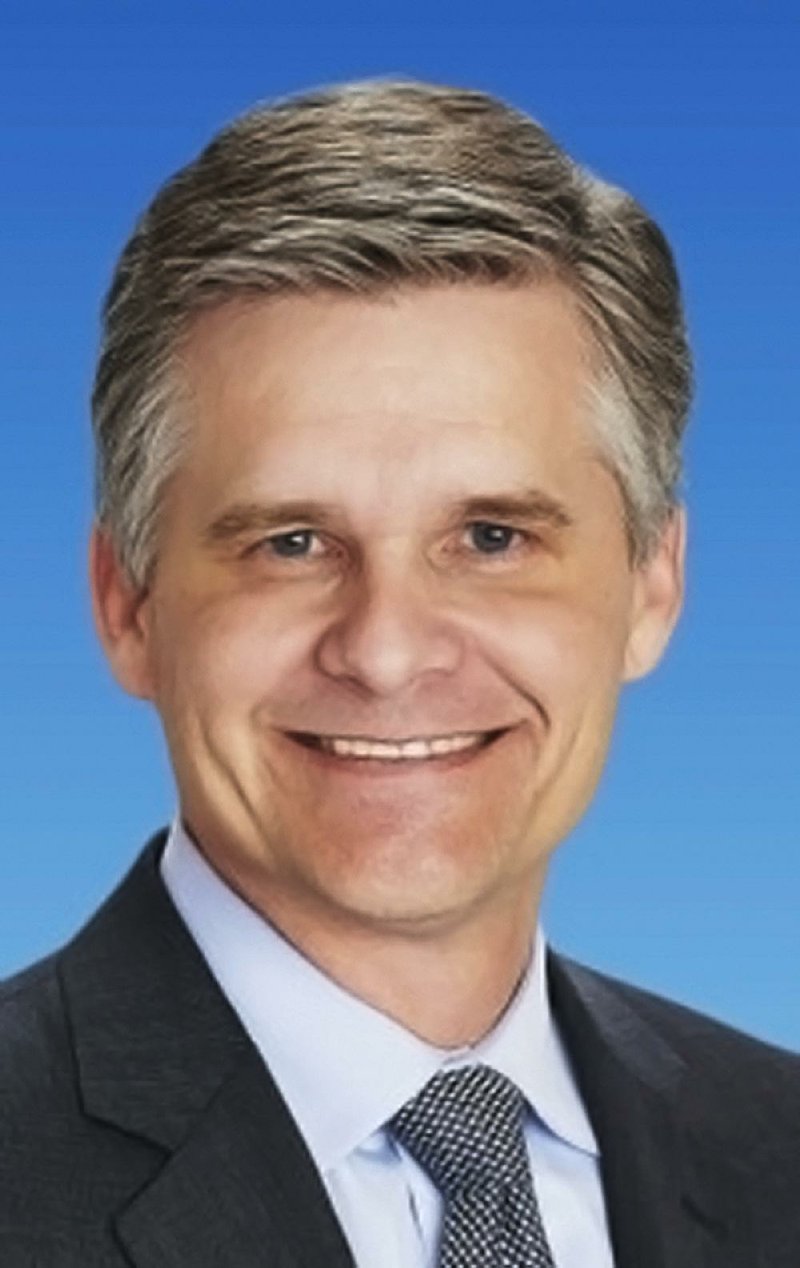SEARCY -- Wal-Mart Stores Inc. has spent billions on efforts to strengthen its e-commerce capabilities the past few years, investing in technology, building fulfillment centers and making decisions like the recent acquisition of Jet.com.
But the retailer's ongoing activity in the e-commerce space is not an indication Wal-Mart is putting its vast network of stores -- which remain responsible for the bulk of its revenue -- on the back burner as it tries to keep pace with the changing retail landscape, according to Chief Financial Officer Brett Biggs.
"Fifteen years from now will look very different than it does today, but certainly stores are going to be a part of the shopping future," Biggs said. "I feel very strongly about that."
Biggs, who has been Wal-Mart's CFO for nine months, discussed the future of retail and the role he believes Wal-Mart's stores will continue to play, among other topics, during an appearance Thursday at Harding University. He returned to his alma mater as the guest speaker for the university's American Studies Distinguished Lecture Series and also participated in the dedication of the Waldron Center for Entrepreneurship and Family Business on Friday.
Biggs has worked in a variety of roles at Wal-Mart since 2000 and, in that time, witnessed plenty of change in retail stemming from technological advancements that have led to the rise in online shopping. But Biggs pointed to Wal-Mart's recent quarter results, where U.S. traffic increased 1.2 percent and same-store sales rose 1.6 percent, as an indication consumers still want to stroll through the retailer's 11,500 stores -- including 4,600 nationwide -- even as online sales rise.
"You see people continue to shop in stores," Biggs said. "That's going to be a big part of people's lives, but you've got to be where the customer wants to go and customers also want to be online. You have to be willing to make that change."
Biggs believes Wal-Mart is doing so under Chief Executive Officer Doug McMillon, who is leading the company's efforts to blur the lines between its physical and digital capabilities.
Building Wal-Mart into an omni-channel retailer -- one that provides multiple purchasing options for customers -- has been outlined by McMillon and other Wal-Mart executives numerous times. Biggs reiterated it once again Thursday.
While Amazon.com is the unquestioned e-commerce leader, Biggs said Wal-Mart believes it is working to accomplish something that "has not been done in retail" by connecting its stores and digital offerings to create a seamless shopping experience. Wal-Mart has taken steps by introducing programs like online grocery pickup and store pickup, ramping up the number of items available for purchase online, and adding services like subscription-based, two-day delivery.
"We want people to be a Wal-Mart shopper and in the past it used to be going to our stores," Biggs said. "Now it's very different. We want you on our website. We want you coming and picking up groceries at our store, picking them up on the curb. We just want you to be a Wal-Mart shopper. Being able to intersect what we're doing in stores and in e-commerce is what we're going to do in the future."
Success is vital for a company that generated $482.1 billion in sales during fiscal 2016.
Recent moves like the $3.3 billion acquisition of Jet.com, which is pending regulatory approval, and the decision to sell its online site in China to JD.com for a 5 percent stake, show Wal-Mart's ongoing commitment to growing its e-commerce business. But online sales of about $15 billion in fiscal 2016 accounted for a small percentage of the total revenue.
Wal-Mart has placed an emphasis on its stores as well. While the number of super centers being built annually in the U.S. has declined the past few years, the retailer has invested billions in efforts to clean up each store, improve customer service and make the trip to brick-and-mortar locations more enjoyable for shoppers.
"People talk about convenience and they talk about online being convenient," Biggs said. "But having 120,000 products in a store is also convenient. And being able to get it now. You don't need to wait a day. I can go to a store."
Still, online sales are expected to continue growing. Annibal Sodero, an assistant professor at the University of Arkansas at Fayetteville's Sam M. Walton College of Business, said as the competition for sales continues to shift online, brick-and-mortar retailers like Wal-Mart must strike the balance of focusing on the online space without forgetting about stores moving forward.
"The retail store will still exist, but playing a different role," Sodero said. "They're not only going to be a place where people go and there's dynamic pricing and you try to compete. But it's a place that's going to be used to leverage inventory to ship from the stores to homes. Or even moving in the direction of becoming more of those showrooms.
"This is pretty much where the retail store will go as e-commerce and online grows."
Biggs believes the evolution would be nothing new for Wal-Mart, telling Harding students when he arrived at the retailer it was pulling in about $160 billion in revenue. But Wal-Mart faced questions about whether its growth was ending.
Biggs said being able to adapt in retail is "incredibly important" and Wal-Mart -- with its expanding online capabilities and network of physical stores -- is doing so and positioning itself for further success.
"Being able to combine convenience and price, we think, is the model for retail going forward," Biggs said. "What we're doing with e-commerce and stores is, we think, the winning formula for the future."
Business on 09/10/2016
